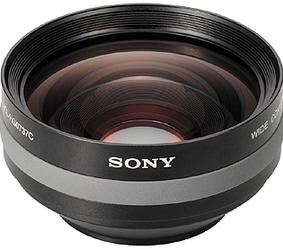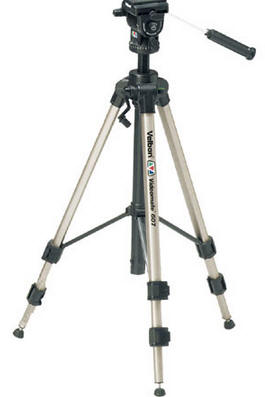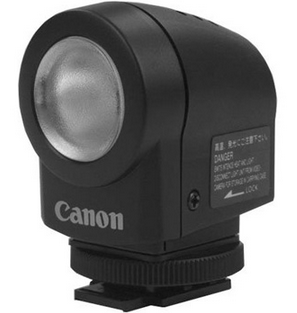
|
|
BOOKS AND ARTICLES Choosing accessories for your camcorder
Priority accessories This is, first of all, a more capacious battery. The fact is that camcorders usually come with low-capacity batteries, which are enough for less than an hour of shooting. Manufacturers seem to "prompt" you (although the expression "push you" is more appropriate here) that it would be a good idea to buy an additional battery. At the same time, they also "push" you to ensure that you definitely buy a branded battery, emphasizing at every opportunity that they cannot guarantee the compatibility of other batteries with their camcorders. At the same time, branded batteries are significantly more expensive than their counterparts from third-party companies. Is buying "substitutes" really that dangerous? In fact, in most cases, not at all. If you buy such a "substitute" from a well-known company (Ansmann, Bescor, Cavei, GP, Lenmar, etc.), then most likely it will not cause you any problems, and it will cost less than the branded counterpart. The exception is Sony camcorders, and, accordingly, batteries for them. Branded batteries are equipped with the InfoLithium system, which calculates and informs the user of the remaining battery charge (the time remaining until it is completely discharged). It is this system that sometimes causes a lot of problems with "non-native" batteries, the camera simply does not want to "start" with them. I myself witnessed one case when a Sony camcorder refused to "start" even ... from a branded battery taken from another Sony camcorder (they say something has changed in the InfoLithium firmware itself, so it began to reject even "its own", but older, batteries). In general, Sony should be approached with extreme caution, although I know many cases when these camcorders also worked on "non-native" batteries.
When purchasing an additional battery, you may need to purchase an external charger for it. The fact is that most camcorder manufacturers charge the battery directly on the camera, and in fact there may be a situation when one battery needs to be charged, but you still need the camera to shoot! This is where external charging comes in: by putting the first battery on charge, you can use the second battery for shooting, so that charging and shooting can go on at the same time. In this regard, Panasonic's approach impresses - an external charger is included with the cameras of this manufacturer. However, even here the purchase of an additional charger can result in additional amenities - faster charging and the presence of an indicator showing the level of charge. Buyers of miniDV and HDV camcorders may also need to consider purchasing an IEEE1394 cable (also called FireWire, Sony uses the name iLink). In most cases, such a cable is not included with the camcorder (although, starting this year, Sony is providing its HDV camcorders with a meter-long iLink 4 4-pin "string"). Without this cable, you will not be able to transfer your video to your computer without loss of quality (although many relatively new miniDV camcorders from Panasonic and Canon allow you to do this via USB 2.0, however, it is not possible to transfer video back to the camcorder via this interface). Of course, for this process, you will also need an IEEE1394 controller in your computer ... however, this is a topic for another article in this series. I’ll only add here that the IEEE1394 connector on video cameras is always 4-pin, but the type of connector on the other end of the cable you need depends on which connectors are used in the controller on your computer (for a desktop computer, this is usually 6 pins, for laptop - 4 pins). By the way, when buying such a cable, do not get carried away with saving money - most often problems like "the computer does not see the camera" arise precisely because of low-quality cables. Well, for cameras with flash cards and hard drives as video carriers, there is no problem buying a cable - they communicate with a computer via USB 2.0 interface, and the cable usually comes with the camera (a flash card can also be read through a card reader, of course, if you have it and supports the appropriate card format). Necessary accessories Here we will talk about accessories that you may not need immediately after buying a camcorder, but still, most likely, you will quickly realize the need to purchase them. This is, firstly, a protective filter (it is also often called a UV filter). I don't know about UV, but the protective function of this filter is very useful - it's better if dirt gets dirty on a relatively inexpensive filter than on an expensive video camera lens. When choosing such a filter, first of all, pay attention to the diameter of the mounting thread (30 mm, 37 mm, 43 mm, etc.) - it must match the diameter of the mounting thread for the filters and attachments of your video camera. It is also desirable that the filter has multilayer coating (abbreviated as MC) - this significantly increases the light transmission of the filter. Secondly, this is a wide-angle attachment (a lens attachment that increases the field of view of the camcorder). The fact is that most modern consumer video cameras have a rather small field of view even at the minimum zoom. And this threatens with the fact that, for example, in "apartment" shootings you will not be able to "fit" everything that interests you in the field of view of the video camera, and you will not be able to move away because of the limited space. The main parameters of wide-angle nozzles is the diameter of the mounting thread (as in the case of a protective filter, it must match the diameter of the mounting thread for the filters and nozzles of your video camera, you can, of course, use adapters, but there is a danger of earning vignetting - darkening in the corners of the picture) and nozzle multiplicity. The magnification (0.7x, 0.5x, 0.3x, etc.) is the number by which the focal length of the camera lens must be multiplied to obtain the so-called equivalent focal length of the "lens + attachment" system. In simpler terms, when using a nozzle with a magnification of, say, 0.7x, the field of view will increase by 1/0.7=1.43 times, when using a nozzle with a magnification of 0.5x, by 1/0.5=2 times, etc. What multiplicity to choose? It would seem, the less - the better? It turns out that it doesn't. The fact is that nozzles with a lower magnification, increasing the field of view, simultaneously introduce the so-called "distortion", distortion of the image at the edges of the field of view. Moreover, the lower the multiplicity, the more noticeable the distortion becomes. So it is necessary to pursue "wide-angle" with a fair amount of caution.
The next question that arises when choosing a wide-angle nozzle is the choice of the manufacturer. Of course, camcorder manufacturers encourage users to use their branded attachments. But, as always, such nozzles are noticeably more expensive than "non-native" nozzles. However, branded nozzles quite noticeably differ in price. What to choose - cheaper or more expensive? In terms of choosing "branded" or not, the situation is similar to that which was when choosing batteries - there are products of fairly respected companies on the market (Raynox, Cavei, Century Optics, etc.), which should not give you any problems, and the price of their products is lower than for "branded" ones. But what about the difference in prices for different nozzles of the same company (sometimes very significant), how do they differ, and is this difference worth the difference in price?
Firstly, there really is a difference and it concerns the quality of the picture. After all, and this should always be remembered, the use of any attachments on the lens of a video camera degrades the quality of the picture. And the degree of this deterioration is less for expensive nozzles, they, in particular, provide greater image clarity, especially at the edges of the frame. In addition, they make it possible to use the entire zoom range of the camcorder, cheaper attachments may have certain limitations on this range - at certain zoom values, the camera simply cannot focus normally. Well, the question is whether or not these differences are worth the difference in price, everyone decides for himself - there is no single "recipe" here. Useful accessories In this category, I brought those accessories that you may not need, but, of course, will not interfere with the "household". Let's start with the TV attachments. In principle, everything is the same here as in the case of wide-angle nozzles, only the multiplicity of such nozzles is more than one - that is, they increase the scale, "zoom in" the image. Let's say if your camcorder's maximum optical zoom is 12x and you use a 2x telephoto lens, you'll end up with a total zoom value of 24x. I did not put such attachments in the category of "necessary accessories", since the maximum optical zoom of modern digital camcorders already reaches quite impressive values (especially for models of the budget category), so you most likely will not need an additional zoom. However, there are certain types of shooting for which the use of a telephoto lens is not at all superfluous (for example, shooting wildlife). Since we're talking about tele attachments, it's time to move on to the next useful accessory. The fact is that the use of teleattachments requires high-quality stabilization of the video camera, and, as you know, a tripod is the highest quality stabilizer. And there is a big difference between "video" and "photo" tripods. While photo tripods don't care about the smoothness of the tripod head, video tripods do. Indeed, in the process of filming, you will probably do the so-called "panning", turning the camera in horizontal and vertical directions. And this movement should occur smoothly, without jerks, which requires tripods with the so-called "hydraulic head", which just ensures "smooth movement". Such tripods cost more than ordinary photo tripods, but believe me - they deserve it. Relatively cheap representatives of this class are Velbon video tripods (models CX-480, 586, 686). But in any case - whether you buy a tripod with a hydrohead or not - you need to pay special attention to the smoothness of the tripod head.
Now let's talk about external microphones. The need for their use is due to several main reasons. Firstly, the built-in microphones of camcorders often "catch" the noise of the mechanics of the camera itself (the noise of the tape drive mechanism in miniDV and HDV camcorders, the noise of rotating discs and the drive in DVD and HDD camcorders). The use of an external microphone solves this problem.
Secondly, the built-in microphones have an almost circular directional pattern, that is, they capture sounds equally well from almost all directions. But you may have the task of recording only the sound in the direction of shooting and suppressing sounds from other directions (for example, recording a lecture). To do this, you need a directional microphone with a narrow pickup pattern. And there are zoom microphones that change their polar pattern depending on the amount of zoom on the camcorder - at the maximum zoom value they have a narrow aperture, at the minimum zoom value they are circular. That is, the microphone, like the attachments that we talked about earlier, can also be selected for a specific task. Well, and thirdly, the reason for buying an external microphone may be a banal dissatisfaction with the quality of the built-in microphone... True, before deciding to purchase an external microphone, you need to make sure that you can connect it - the camcorder must have a microphone input. Unfortunately, a significant number of models of modern consumer video cameras are deprived of it. Another option for connecting an external microphone is smart accessory mounting pads, which are quite common on video cameras and allow you to exchange information between the device (microphone, light, flash) installed on such a pad and the video camera. In particular, the zoom microphones mentioned above are installed precisely on such sites. But in this case, you will be limited in your choice - only branded accessories are suitable for such smart platforms. And the last thing I would like to briefly mention is the choice of external light, a lighting lamp. Modern household video cameras do not shine with sensitivity, and therefore the purchase of an external lighting device (devices) can become an urgent need. But even here we must remember that providing sufficient stationary lighting is a much more acceptable option than on-camera light (an illuminator attached directly to a video camera). If you still settled on on-camera light, then the choice basically comes down to choosing the power of the illuminator. Low power lamps (3 W) are used mainly for foreground illumination, while medium and high power lamps (10-100 W) are used to illuminate more distant objects.
When working with on-camera light, it is necessary, if possible, to avoid moving the video camera, otherwise an unnatural "dance of shadows" may occur. Of course, you need to take care of the issue of attaching the lamp to your video camera, there may be various options - the camera itself may have a platform for attaching accessories (intelligent or not) or a special bracket for attaching it may come with the lamp. Branded low power lamps installed on the smart platform are most often powered directly from the video camera, while medium and high power lamps are powered from external sources. Conclusion I want to note right away that this article does not at all claim to be complete in the presentation of the issue - it briefly lists only the most necessary accessories; during the operation of the camcorder, you may find that you need accessories that we have not mentioned - various filters, macro attachments, adapters, etc. Yes, and the division into classes - "primary", "necessary", "useful" - is largely arbitrary; for example, you can easily move a wide-angle attachment or a protective filter from "necessary" to "priority", etc. Everything is determined by the conditions in which you shoot and the requirements that you place on your video. But I still hope that this article can give you a basic idea of what you might need after purchasing a camcorder, and help you avoid the "shock" that we talked about at the beginning of the article. Publication: ixbt.com
▪ Interlacing and how to deal with it ▪ AVerMedia DVD EZ Maker USB Plus
Artificial leather for touch emulation
15.04.2024 Petgugu Global cat litter
15.04.2024 The attractiveness of caring men
14.04.2024
▪ ESP32-DevKitC-V Development Board ▪ LG ltraGear 48GQ900 OLED Gaming Monitor ▪ Leeches will help zoologists
▪ section of the site for the Builder, home craftsman. Selection of articles ▪ article From young nails. Popular expression ▪ article What is luge? Detailed answer ▪ article Gray mustard. Legends, cultivation, methods of application ▪ article Coordination EMF. Encyclopedia of radio electronics and electrical engineering
Home page | Library | Articles | Website map | Site Reviews www.diagram.com.ua |






 Arabic
Arabic Bengali
Bengali Chinese
Chinese English
English French
French German
German Hebrew
Hebrew Hindi
Hindi Italian
Italian Japanese
Japanese Korean
Korean Malay
Malay Polish
Polish Portuguese
Portuguese Spanish
Spanish Turkish
Turkish Ukrainian
Ukrainian Vietnamese
Vietnamese








 See other articles Section
See other articles Section 